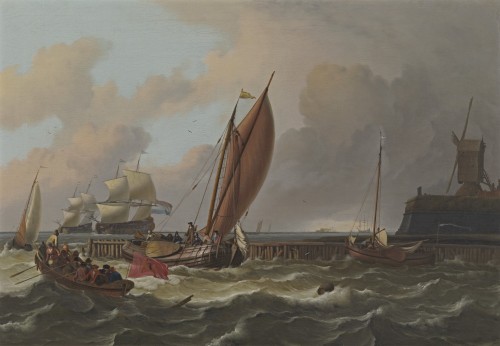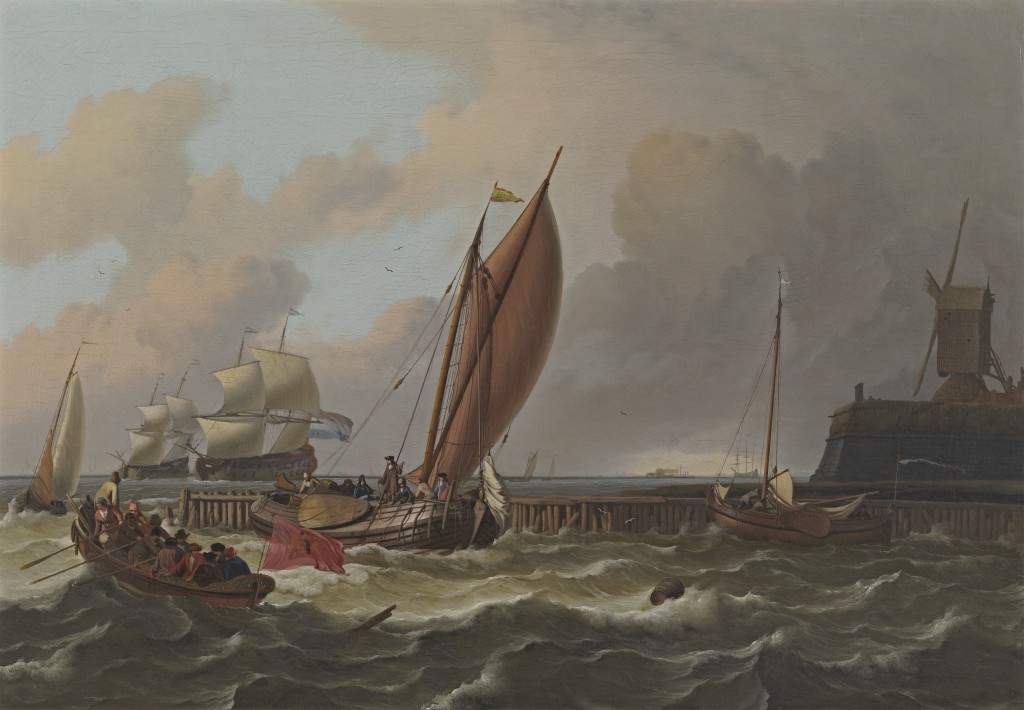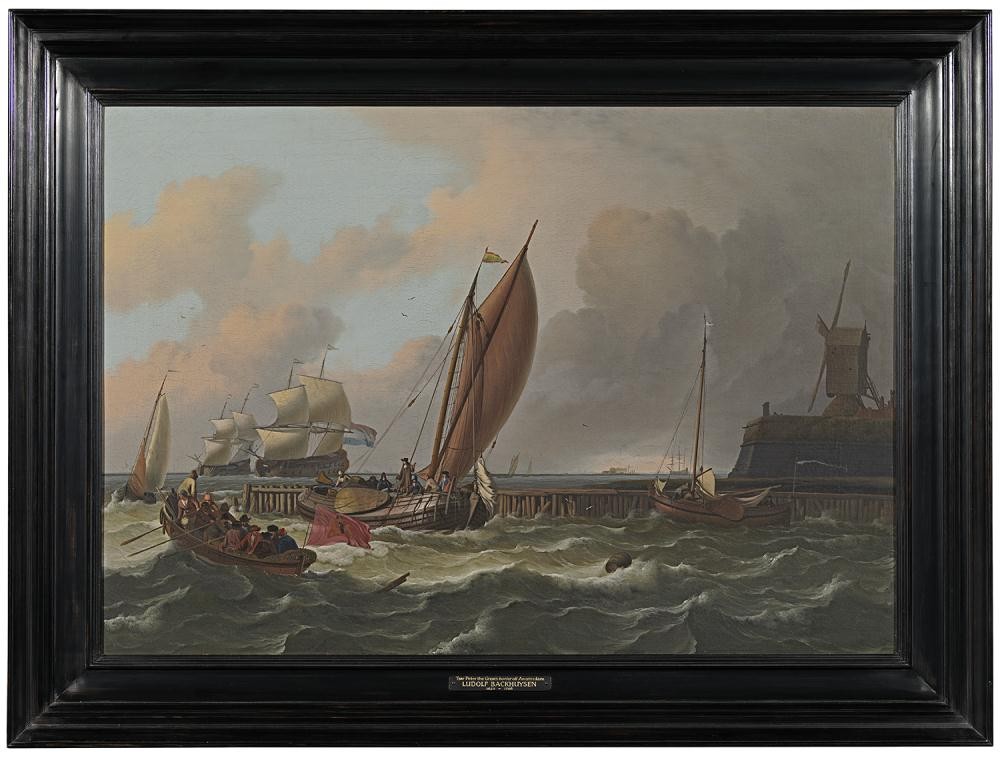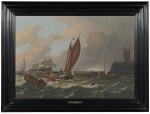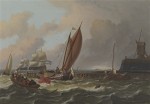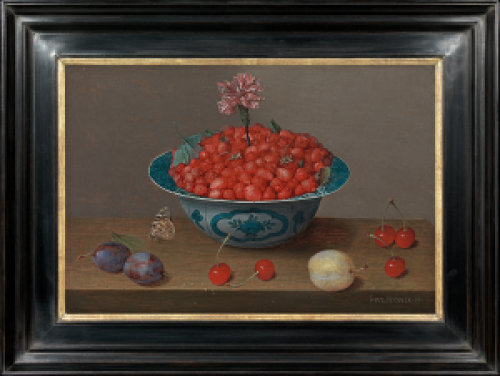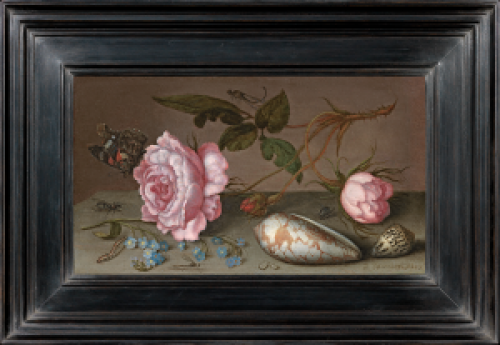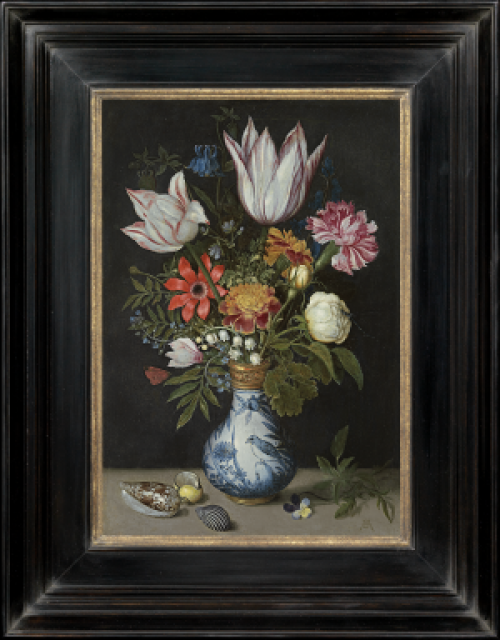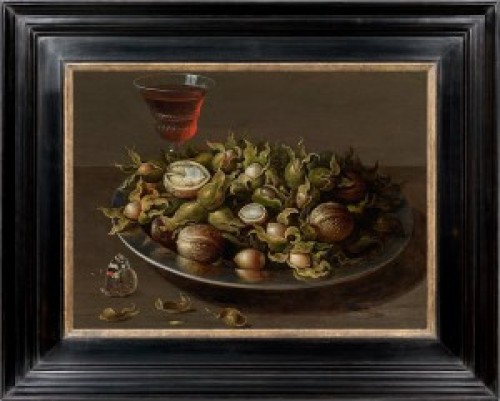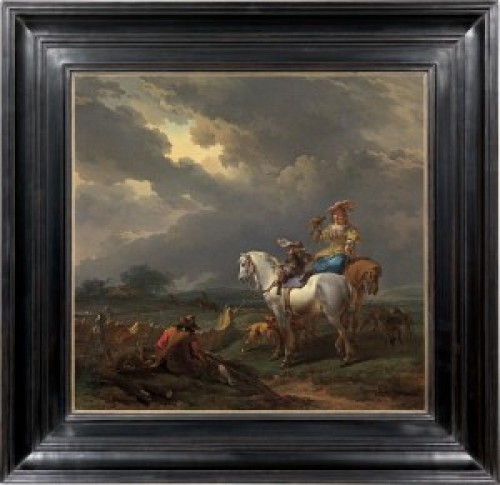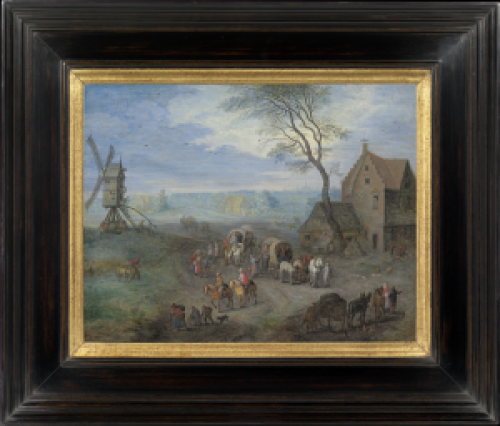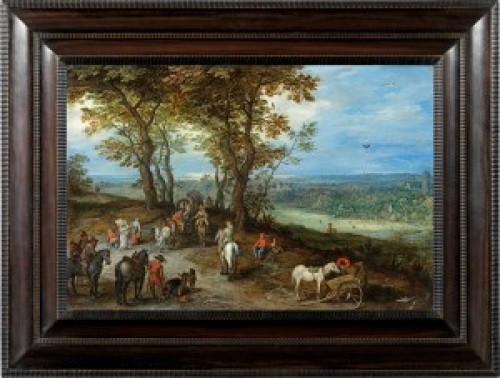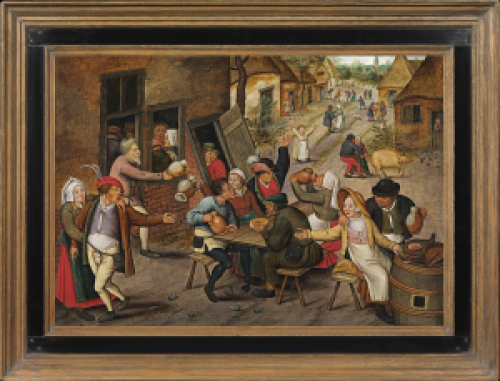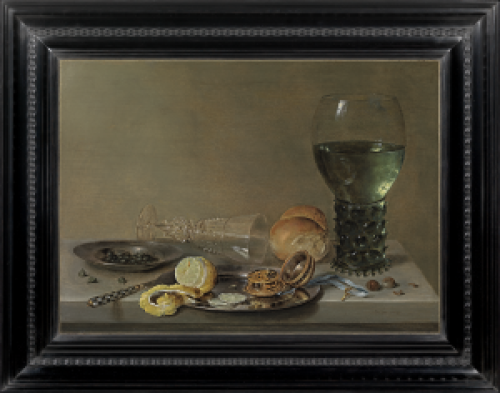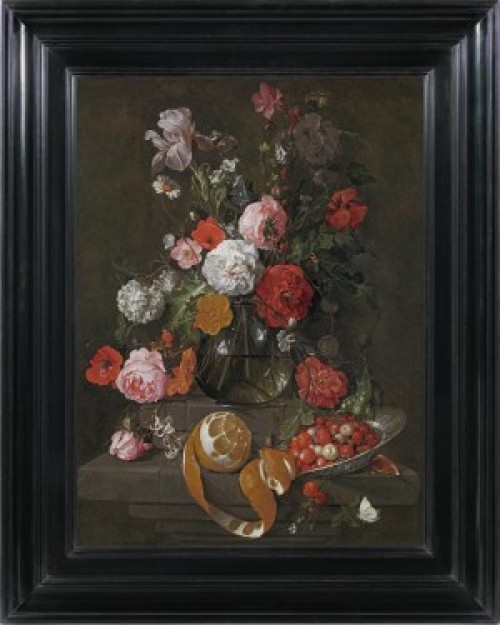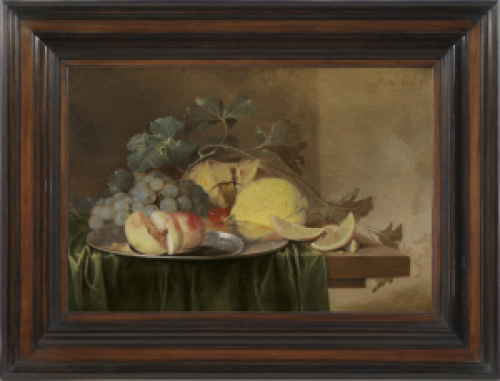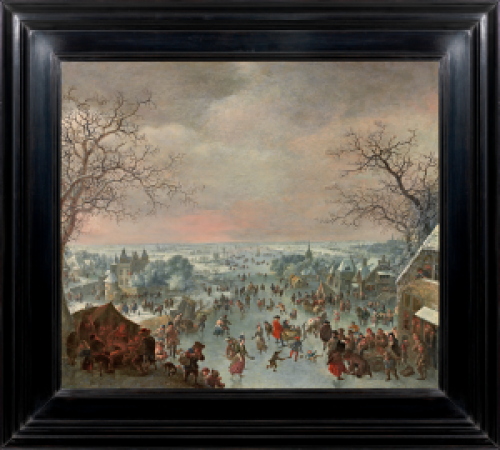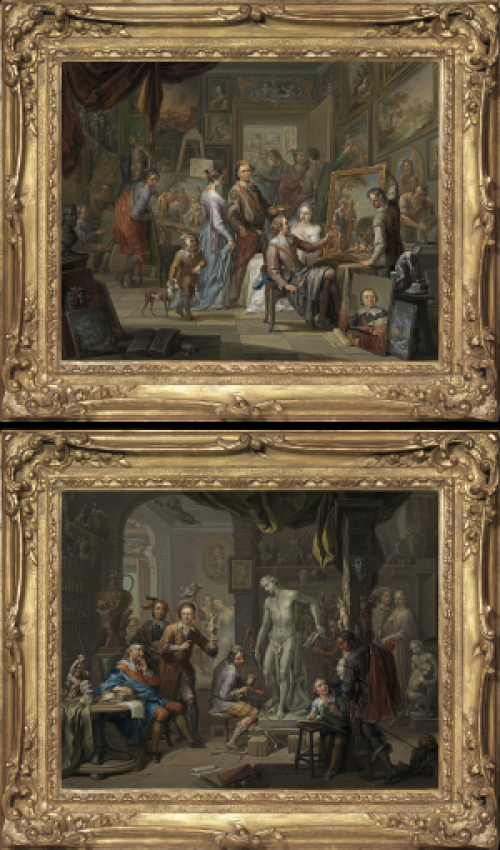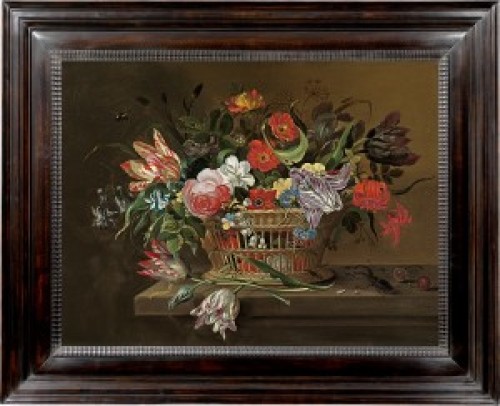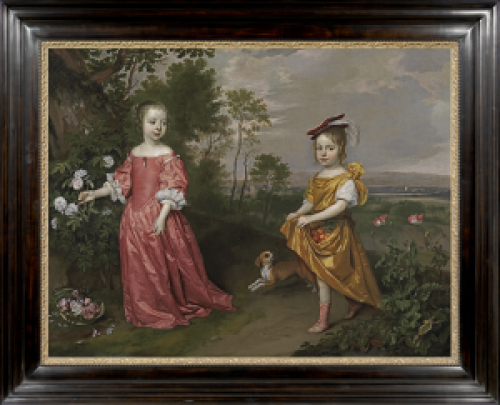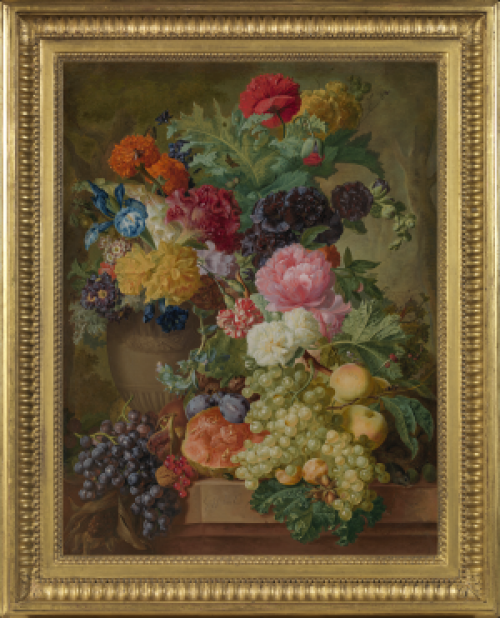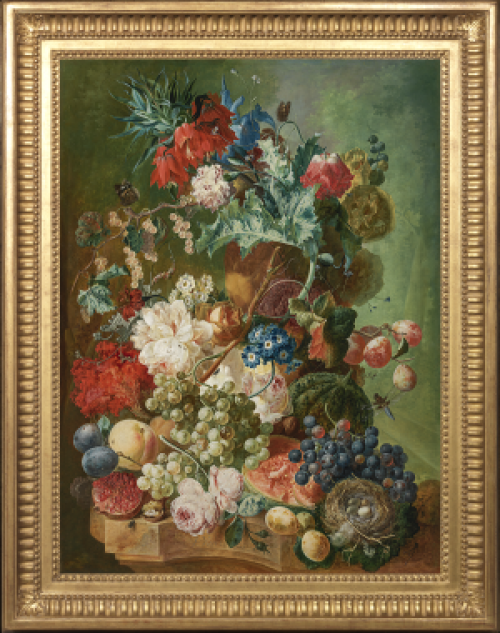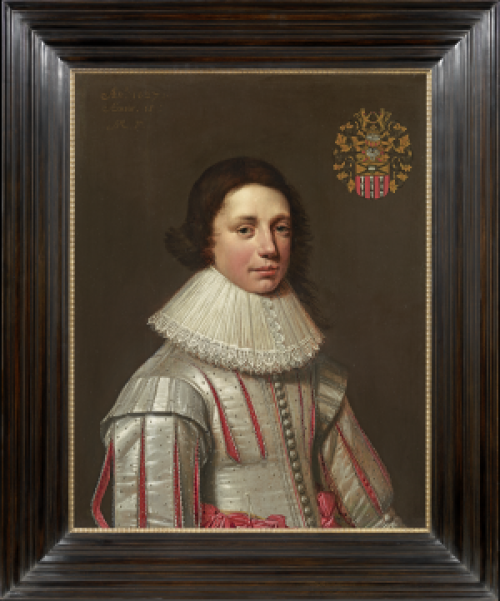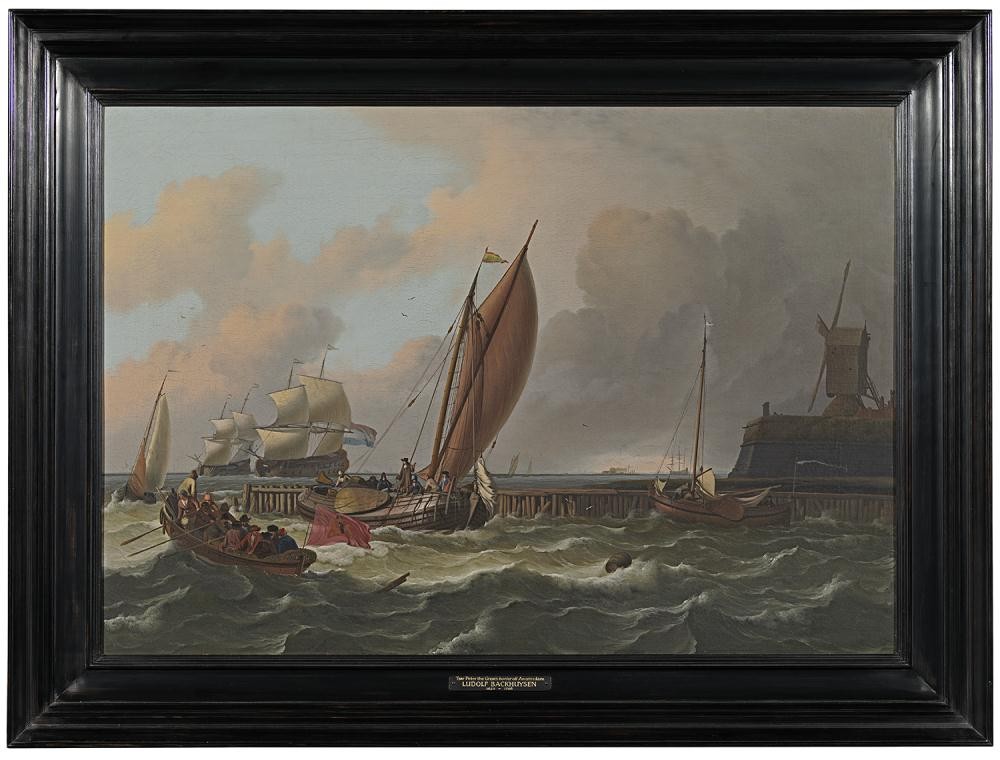LUDOLF BACKHUYSEN
Emden, East Friesland 1630 - 1708 Amsterdam
Ref: BL 77
Tsar Peter the Great's boeier off Amsterdam
Signed with initials and dated 1697; signed with initials on the flag of the boeier
Oil on canvas: 21 ¾ x 31 ¼ in / 55.2 x 79.4 cm
Frame size: 28 x 37 ½ in / 71.1 x 95.2 cm
Provenance:
D Komter, Amsterdam;
his sale, Mak, Amsterdam, 9th-12th March 1926, lot 3 (as The visit of Czar Peter the Great to Amsterdam; DFl.1,125 to Bruyne)
JWF Haverkamp sale, Amsterdam, 5th June 1928
Private collection, Europe
Richard Green, London, 2000
Private collection, USA
Channel Islands Maritime Museum, Ventura County Museums, CA
Literature:
‘Czaar Peter de Grooter als zeiler’, De Watersport, year XI, no.6, p.117, illus.
MGJ Honig, article in Algemeen Handelsblad, 27th March 1928
Gerlinde de Beer, Ludolf Backhuysen 1630-1708, Zwolle 2002, p.146, pl. 178, no.91, illus. in colour
Tsar Peter I (the Great) (1672-1725) visited Holland in 1697 as part of the Grand Embassy in which he travelled incognito under the name of Peter Mikhailov to study the customs and technology of western Europe. From boyhood he had been fascinated by the sea and spent some of his teenage years in exile from Moscow (while his half-sister Sofia ruled as Regent for her feeble-minded son Ivan) learning boatbuilding. The Grand Embassy of 1697-8, which also encompassed Prussia, the Habsburg empire and the Baltic provinces of Sweden, allowed Peter to study of the achievements of two major maritime powers, Holland and England. What he learnt laid the foundations for the Russian navy.
Backhuysen’s painting shows Peter on his boeier (a type of yacht) off Amsterdam. He is the figure in a blue coat trimmed with red standing in the bow of the boat. The man in brown standing by the mast is Nicolaes Witsen, Mayor of Amsterdam and a close friend of the Tsar. Witsen had met Peter in Russia and corresponded for many years with his ministers. Like the Tsar, he was a man of powerful intellect and deeply interested in shipbuilding, author of the famous work Aeloude en Hedendaegsche Scheepsbouw en Bestier (Past and Present Shipbuilding and Ship Handling) (Amsterdam 1671). This was the first treatise to assess shipbuilding from a theoretical viewpoint. Just in front of Witsen is a man wearing a Russian hat and the man and woman to the left of Witsen may also be Russians from Peter’s entourage.
To the left is a statensloep with the flag of the City of Amsterdam, probably arriving to take passengers off the boeier into the city. To the right a zaansch boeier, a small type of boeier named after the town of Zaanstad, wearing an Admiralty flag, bobs beneath the windmill-surmounted fortification of the Blaauwe Hoofd on the approaches to Amsterdam harbour. Cannon on the Blaauwe Hoofd had been part of the mock battle staged in honour of Peter’s arrival; a sentry box is perched on the edge of the rampart. In the left distance are two Dutch men of war.
By 1697, when the Tsar visited Holland, Backhuysen was the country’s leading marine painter, working for the wealthy bourgeoisie, the court and probably for the Stadholder William III. His
studio was seen by Cosimo III de’ Medici, Grand Duke of Tuscany, and Frederick I of Prussia, as well as many other celebrated visitors to Amsterdam. According to Houbraken, Backhuysen even
gave Peter drawing lessons. Given the Tsar’s insatiable desire for knowledge, this is entirely plausible.
When Tsar Peter came to Amsterdam, he was a young man of twenty-seven still with an uncertain hold on his throne, not the towering figure of later years. His visit was of minor political import but nevertheless a matter of prestige and interest to the wealthy citizens. All his life Peter had many friends among foreigners; ideas imbibed from western Europe helped him to transform the military, naval and cultural life of Russia. The Tsar’s friend Nicolaes Witsen was also a friend of Backhuysen and this painting may well have been commissioned by him. Rather than being a pompous record of state ceremonies, it seems to show the off-duty Tsar, engaged in what he enjoyed best – messing about in boats.
Report compiled with information kindly communicated by Dr Gerlinde de Beer.
LUDOLF BACKHUYSEN
Emden, East Friesland 1630 - 1708 Amsterdam
Ludolf Backhuysen was one of the leading Dutch marine painters of the seventeenth century, renowned for his meticulous attention to the details of shipping and atmospheric evocation of maritime conditions. He was born in Emden, East Friesland in 1630 and trained as a clerk in his native town. Shortly before 1650 he joined the Bartolotti trading house in Amsterdam, where his fine handwriting attracted attention. He practised calligraphy all his life and until the 1660s made penschilderijen – pen drawings on prepared canvas, panel or parchment – of shipping scenes, a technique developed by Willem van de Velde the Elder.
According to Houbraken, Backhuysen learned to paint in oils from the marine specialists Hendrik Dubbels and Allaert van Everdingen. His earliest known oils, such as Ships in a gathering storm, 1658 (Museum der Bildenden Künste, Leipzig) have a silvery-grey tonality and simple composition, influenced by the work of Dubbels, Everdingen and Simon de Vlieger. Also in 1658, Backhuysen painted a marine background to a portrait by Bartolomeus van der Helst.
In 1656 Backhuysen was referred to as a calligrapher and in 1657 and 1660 as a draughtsman (teyckenaer). He did not declare his profession as a painter until his third marriage, to Alida Greffet, a wealthy woman who ran a silk business, in 1664. She left him a fortune when she died in 1678 and Backhuysen was married for a fourth time, to Anna de Hooghe, a prosperous merchant’s daughter.
Backhuysen joined the Amsterdam guild of painters in 1663. In 1665 he was commissioned by the burgomaster of Amsterdam to paint a View of Amsterdam and the IJ (Louvre, Paris) as a present for Louis XIV’s foreign minister Hugues de Lionne, Marquis de Berny. After Willem van de Velde the Elder and Younger left for England because of economic uncertainty resulting from the renewal of war between England and Holland in 1672, Backhuysen became the leading marine painter in the Netherlands. According to Houbraken, Cosimo III de’ Medici, Grand Duke of Tuscany, Frederick I of Prussia and Peter the Great visited his studio; the latter is said to have taken drawing lessons from him.
After 1665 Backhuysen’s compositions become more daring, his colours brighter and the atmosphere more dramatic, with choppy seas and stormy skies. He was often inspired by historical or military subjects, for example the First day of the Four Days’ Battle, 11th-14th June 1666 (circa 1670; Statens Museum for Kunst, Copenhagen). Much of his work, however, celebrates Amsterdam and her mercantile trade. His pupils and studio assistants included Abraham Storck, Wigerus Vitringa and Gerrit Pompe.
In 1701, at the age of seventy-one, Backhuysen published his first etchings, D’Y Stroom en Zeegezichten (Views of the River IJ and the Sea). He also made fine drawings of seascapes and oil portraits of his friends, a civilised mixture of artists, scholars and poets. Backhuysen died in Amsterdam in 1708. None of his children became artists, but a grandson, Ludolf Backhuysen the Younger (1717-1782), imitated him.
The work of Ludolf Backhuysen is represented in the Museum Boymans-van Beuningen, Rotterdam; the Mauritshuis, The Hague; the Rijksmuseum, Amsterdam; the Statens Museum for Kunst, Copenhagen; the National Gallery, London; the National Maritime Museum, Greenwich; the Louvre, Paris and the Pitti Palace, Florence.

